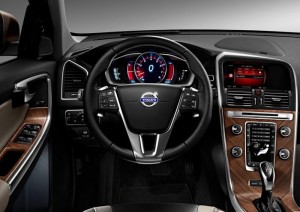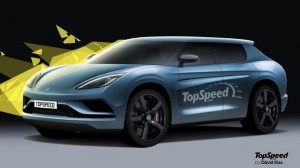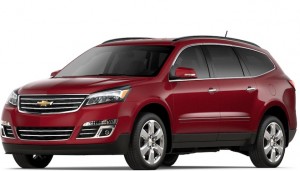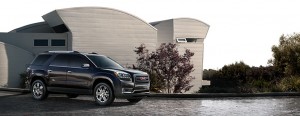Daily Archives: July 6, 2017
Volvo To Offer Only Electrified Powertrains In The Future
Volvo is joining the rest of the European car manufacturers in steering the auto industry towards an electrified future. The company announced on Wednesday that it will only offer electrified powertrains starting in 2019, completing phasing out the internal combustion engine from its lineup.
According to Autonews, Volvo CEO Hakan Samuelsson said in a statement that the announcement comes on the heels of the manufacturer’s plans to sell one million electrified cars by 2025. “When we said it[,] we meant it. This is how we are going to do it.”
Back in 2014, Volvo revealed plans of offering a plug-in hybrid alternative alongside versions of its traditional gasoline and diesel-powered engines. The company CEO explained that the move will allow Volvo to “stand out” from their competitors.
Henrik Green, Volvo’s research and development head, told the source that vehicles powered only by a combustion engine would be phased out from the company’s lineup between 2023 to 2025. That’s a long way from now, but it seems to look doable under Volvo’s current plan.
Between 2019 and 2021, Volvo plans to offer five cars from its full-electric lineup. The company presently has nothing in this department, but the next years will prove challenging for the car manufacturer as it shifts away from the use of combustion engine.
Three of the planned full-electric vehicles will come from Volvo while the remaining two cars planned will be produced by Polestar, which parent company Volvo plans to transform into a stand-alone brand for high-performance electric vehicles.
Electrified Technology is on the Rise
Volvo’s electrified models will be manufactured in its factories in Europe, China, and the United States. Although heftier in investment costs, Samuelsson told Reuters this will be shouldered by the company’s existing budget.
The switch towards an electrified future is a move well-recognized in Europe, where analysts ave been predicting the rise in electronic technology by 2020. Aside from Volvo, its competitors Renault and the Volkswagen Group are also offering hybrid technology.
A number of key European cities may also be banning the use of diesel engines, but the cost of an after-treatment systems to make diesel comply to new emissions regulations may not be worth the investment.
4 Major Predictions About The 2020 Koenigsegg SUV
Swedish car manufacturer Koenigsegg has been adamant that it won’t join the current fray of SUV lineups by supercar makers such as Bentley and Lamborghini. Still, many car analysts and experts believe the company won’t be able to resist the temptation of creating something spectacular—perhaps even the most luxurious, high-performance SUV ever?
1. Exterior
The rendering featured in TopSpeed of what could possibly be the Koenigsegg SUV in the future will take its exterior cues from its current lineup of supercars, the Agera and the Regera. At the front, the headlights are going to be the same, albeit larger version, as those found on the Agera. The artist, however, believed the SUV will carry a new LED pattern at the edges.
On the sides, the SUV would most probably have the same lines as the Regera, though the rendering decided to turn these lines into a milder version since aggressive styling won’t really be what Koenigsegg would be after with its first SUV. The vision has the SUV with a sleek, low roofline with short side windows, as well as a straight roof and heavily raked C-pillars and rear windscreen.
The large wheels would have lightweight rims from the use of carbon fiber, but massive brake calipers would provide for the sporty look.
The rear, on the other hand, should have a natural flowing line highlighted by horizontally-oriented taillights and detailing that would give the SUV a wider stance.
2. Interior
The Agera and Regera are recognized by its sporty and luxurious interiors, but the SUV will most probably go for the luxury rather than a sporty appearance inside. The highlight of the SUV would be the dashboard as it has to comply to the wider center stack and the taller center console, thanks to a higher seating position.
By 2020, Koenigsegg would have a new technology to tinker with when it comes to the infotainment system. It would definitely have more features, more options, a larger display, and an instrument cluster that can display more numbers than the current performance data. Standard to the SUV’s interior appearance would be leather and Alcantara, though there is also the expectation of aluminum and carbon fiber elements.
3. Drivetrain
The question is: Will Koenigsegg go with the conventional or an all-electric setup for its drivetrain? A conventional setup means the Swedish company might use a twin-turbocharged 5-liter V-8 engine and a dual-clutch transmission that can produce around 600 to 700 horsepower.
It could also opt for a hybrid drivetrain, pairing the 5-liter V-8 engine to at least three electric motors. It could use the Koenigsegg Direct Drive, that patent-pending tech that would use an electric motor instead of the current gearbox.
4. Prices
The SUV won’t cost as much as the Agera, currently priced at $2 million, but it won’t go below $1 million either.
Top 3 Truly American Cars in 2017
How would you recognize all-American cars from the ones which were merely assembled in the US but used Japanese mechanics? The global economy opened up the possibility for car manufacturers to source their materials from all over the world. A single vehicle can be planned in Germany but assembled in Asia with parts coming from North America.
To be able to determine which are truly American cars, Frank DuBois, an associate professor at the American University Kogod School of Business, developed a formula based on the car’s final assembly point, its major components, the headquarters of the manufacturer, the research-and-development centers, and the percentage of US and Canadian parts in the vehicle.
1. Chevrolet Traverse
Seventy one percent of the Chevrolet Traverse’s parts come from the United States and its neighbor, Canada. Its manufacturer, General Motors, has headquarters in Detroit while the Traverse itself was produced and assembled in a factory in Lansing, Michigan.
The Traverse was completed redesigned for 2018. It is powered by a 281-horsepower V-6 engine with either a front- or all-four-wheel drive system. This will be paired with a six-speed automatic.
2. Buick Enclave
Like the Traverse, the big, bad Buick is made at GM’s Lansing, Michigan assembly plant. According to Prof. DuBois’ calculation, the Buick is 85.5 percent American, thanks to being part of an assembly plant that GM said produced more than two million vehicles to date.
The Buick Enclave is going to be redesigned for 2018, so expect a 288-horsepower 3.6-liter V-6 engine paired with a six-speed automatic and either a front- or all-wheel drive system. The new Enclave will be on sale starting Autumn 2017.
3. GMC Acadia Limited
The Acadia Limited is the older and longer three-row crossover that is the predecessor of the current redesigned GMC Acadia. The older one is certainly more American than the current model in the market, though the Limited is still being sold alongside it. Like the Traverse, the Acadia Limited’s parts are 71 percent from the US and Canada.
The Acadia Limited boasts of its roomy interior that is packed with cool features such as the Apple CarPlay, Android Auto, 4G LTE connectivity, and mobile Wi-Fi. There are two options available: the 2.5-liter four with 193 horsepower and the 3.6-liter V-6 with 310 horsepower.





